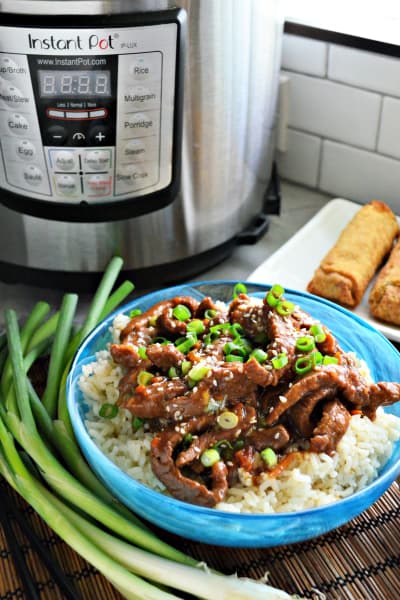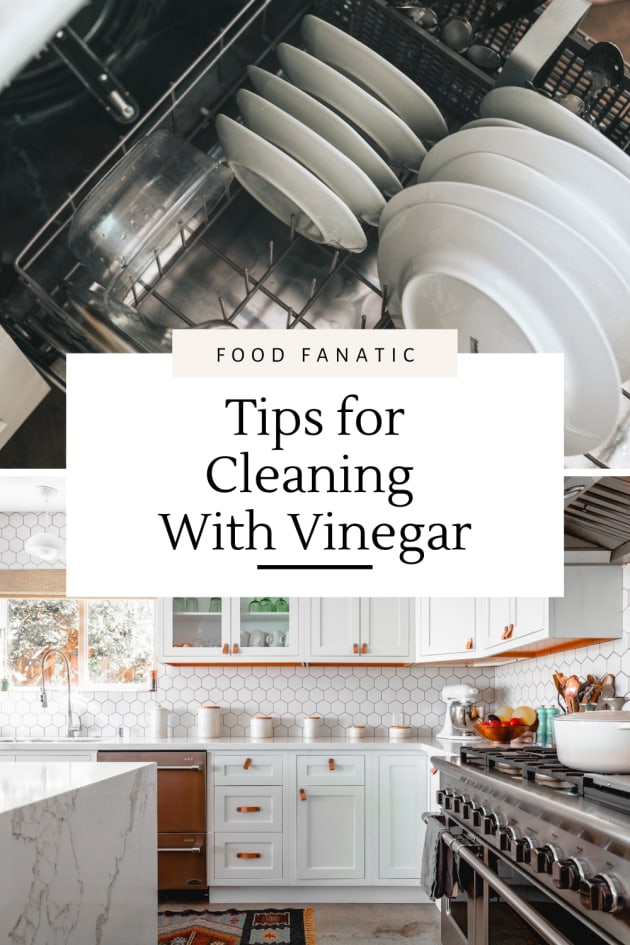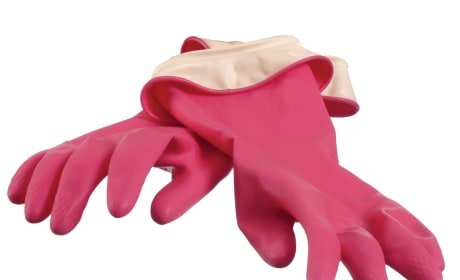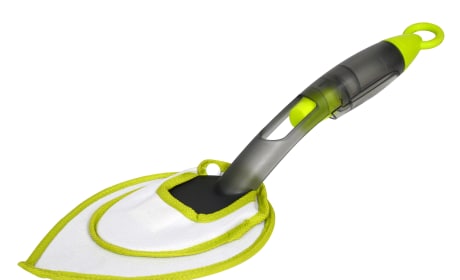7 Kitchen Appliances You Should Be Cleaning With Vinegar
Nicole AustinCleaning with vinegar is effective, affordable and environmentally-friendly. Check out our tips for cleaning your kitchen appliances with vinegar!
Safe, affordable, environmentally-friendly, cleaning with vinegar is an effective way to clean just about anything - including kitchen appliances!
A safer, smarter solution to your kitchen cleaning needs, vinegar stands out among other cleaning products for many reasons.
Cleaning experts cite its effectiveness at killing germs and bacteria, including e. coli and salmonella, at anywhere from 80 to 90% efficacy.
This makes it one of the most powerful household cleaners - and there are no toxic chemicals! This is probably the biggest benefit of cleaning with vinegar.
As many of us become more mindful of our impact on our health and our overall world, many people are seeking alternative cleaning solutions that don’t have a lot of unnecessary fuss and dangers.
Vinegar is a natural disinfectant that is not only non-toxic, but it's also void of any artificial colors or fragrances - and it's safe for the environment.
As a parent, I know that I worry about my children being exposed to harmful chemicals, especially on food surfaces.
While I will occasionally reach for the bleach or hydrogen peroxide for a deeper clean, there are plenty of uses for vinegar in the kitchen that make it one of my number one go-to options.
The acidic nature of vinegar allows it to easily cut through grime, grease, and scale, making it a champion of household cleaning while also being incredibly budget-friendly.
A bottle of vinegar usually costs just a couple of dollars and will last through many cleaning tasks.
It's a versatile cleaner, which when combined with other household cleaning products, such as 50/50 with dish soap, can provide you with a pretty powerful tool to battle some tough messes.
Today we’re going to look at some of the best ways to clean your kitchen with vinegar, and share some surprising tricks and tips.
Cleaning With Vinegar
Before you jump into cleaning with vinegar it's important to consider what type of vinegar you're using. There are many types of vinegar widely available at grocery stores, but not all are created equal.
White vinegar is the vinegar you want to use for cleaning as opposed to using something like a rice vinegar, champagne vinegar or apple cider vinegar.
White vinegar is a natural cleaner and when you combine equal parts vinegar with equal parts water, for instance, it makes an effective all purpose cleaner.
If you don't love the smell of vinegar, that's understandable, but essential oils can help with that!
Add a few drops of essential oil to your vinegar cleaner to help balance the strong vinegar smell and you're in business.
You can then use vinegar cleaners to clean everything from kitchen appliances, such as stainless steel appliances and your automatic coffee maker, to hardwood floors, granite countertops, and more!
How To Clean Refrigerator With Vinegar
A fridge can be a messy place - full of long-forgotten vegetables with the best of intentions, or spills that kids (or, yes, even you) neglected to wipe at the time, the shelves and drawers will unquestionably need your attention regularly.
Cleaning out your fridge with white vinegar is a great way to battle any mold spores from long-ago that will spoil your foods sooner.
This is also a great time to check the expiration date on your condiments then ditch the ones that are old and make note of those expiring soon.
Here are some great steps to cleaning your fridge, using a vinegar cleaning solution:
- Empty the fridge. This seems obvious, but you’re never going to get a good clean unless you remove all the food items. This is best done in cool weather, where you can put a cooler or box on a porch or in the garage while you wait, but it won't take long enough to risk spoiling food.
- Remove anything that can be removed, and wash it in the sink or tub. I sometimes have to wash the larger glass shelves in the bath tub with warm, dish-soapy water. Wash one item at a time, particularly if they are breakable. Set on a large towel on the counter or table to dry.
- Wipe out the interior of the fridge with a dry or slightly damp cloth. You will probably find random crumbs or pieces of food to toss while on this step.
- Using a spray bottle of 50/50 white vinegar and water solution, lightly spray all interior surfaces of the refrigerator. If you don’t have a spray bottle, mix the solution in a large bowl with and use a cloth or rag. Wipe down the surfaces, cleaning all cracks and crevices thoroughly.
- Dry off and replace all removable parts. Your drawers and shelves will sparkle!
- Wipe down containers as you replace them. Cleaning off the bottom of bottles and jars will help keep your freshly washed fridge nice and clean.
Tip: To combat fridge odors, add an open container of baking soda or small bowl of vinegar to your fridge. Replace as needed to keep things smelling fresh.
How To Clean Stove Top With Vinegar
If you’re anything like me, you get so busy in the kitchen that spills on the stovetop don’t always get cleaned up as quickly as you intended.
This can lead to stubborn, caked-on messes that become hard as a rock and almost impossible to clean up.
A simple mixture of vinegar, dish soap, and optional baking soda can provide the scouring power you need to remove tough stains without damaging your stove top.
Or maybe you’re up against caked on grease, which feels tacky and slippery to the touch.
Either way, this simple solution of vinegar will save your stovetop, and your sanity.
- Combine 1 part vinegar with 2 parts baking soda and a couple of drops of dish soap of your choice. I personally prefer blue Dawn due to its proven grease-cutting power.
- Mix together and cake on over problem areas.
- Allow the mixture to sit for at least 30 minutes. Then, wipe off with a soapy sponge.
- Repeat as needed. You may only get through one layer at a time, but you’ll see progress!
Tip: A 50/50 ratio of vinegar and dish soap will help you get a sparkling clean sink and shower, too!
How To Clean Microwave With Vinegar
Cleaning the microwave safely and effectively is one of the simplest uses of vinegar in the kitchen to date! It's a great idea for cleaning a tricky problem area in your kitchen.
To clean your microwave with vinegar, use the steam created by a vinegar solution to for easy clean-up that you’ll want to tell everyone about.
- Measure 2 cups of water and 2 tablespoons of vinegar in a microwave-safe measuring cup or bowl.
- Microwave for 5 minutes. Be careful - the liquid will be very hot!
- Let stand, door closed, for 2 to 3 minutes. You’re using the heat and steam to loosen and junk and gunk.
- Using caution, remove the measuring cup and turntable.
- Sponge-clean the interior of the microwave.
- Wipe clean, starting with the ceiling and sides.
- Wipe the turntable with your sponge, rinsing the sponge between uses. Replace the turntable.
- Using a clean dish towel, wipe the interior of the microwave again.
How To Clean Instant Pot With Vinegar
The Instant Pot is a kitchen lifesaver that we love to use for any meal to cut corners, save time, and eat better.
When it comes to cleaning, it seems obvious that the inner pot will need to be cleaned between each use, but did you know the rest of the appliance should be regularly maintained as well?
While most components of the Instant Pot can be cleaned best by using a damp, soapy cloth, you may find that your sealing ring has picked up odors from ingredients.
Running the Instant Pot on the steam setting for two minutes with two cups of vinegar and two cups of water will remove any nasty scents or unwanted residue from the sealing ring.
This great 2:2:2 trick will keep your pot fresh and your food tasting and smelling exactly as it should!
Tip: Using a separate sealing ring for sweets and for savory dishes will reduce the crossover of fragrances that you may find unappealing for your favorite dish.
How To Clean Blender With Vinegar
Blenders can easily be cleaned between uses by adding some hot water and a drop of dish soap into the machine and running it.
Between doing this, and taking it apart so you can safely wipe around blades, you should have a thorough clean that’s easy to maintain.
But you may have noticed that your blender has begun to appear cloudy or seems to be riddled with water spots.
This film is the natural byproduct of blending mineral-heavy fruits and vegetables, and can be made worse with hard water.
Washing your blender thoroughly between uses will be the best line of defense against this, but you may find that even the most vigilant cleaning routine has left you with some stains.
Fortunately, this is an easy fix with vinegar!
- Pour one cup vinegar into the container.
- Fill the container halfway with warm water.
- Allow to soak for several hours in an upright position. You can leave this solution overnight.
- Pour the contents out and scrub the interior to remove any remaining residue.
As always, use caution with blades. Avoid abrasive cleaning tools which can scratch or damage your blender.
How To Clean Dishwasher With Vinegar
If your house is anything like mine, your dishwasher doesn't make it into your cleaning routine as often as it should. Guilty as charged!
To keep your dishwasher working (and smelling) its best, the best thing you can do is give your dishwasher a thorough deep cleaning every six months.
- Remove everything from the dishwasher, including the racks and use a cleaning rag to remove any debris or food particles.
- Your dishwasher likely has a couple of filters, be sure to remove those, too.
- Thoroughly wash the racks and filters in the kitchen sink using a solution of warm water, vinegar and dish soap. Set aside to dry.
- Add 1 cup of vinegar to a dishwasher safe bowl then place the bowl at the bottom of your empty dishwasher.
- Run the dishwasher on the hot wash cycle while the vinegar and the water pressure help to break down any grime, soap scum and mineral deposits.
- Use a clean microfiber cloth to wipe down and clean surfaces along the sides, bottom and top of the dishwasher interior.
- Replace the filters and racks and you're done!
How To Clean a Coffee Maker With Vinegar
Many people know how to clean a coffee maker with vinegar - I'd put money on it being one of the ways people are most comfortable cleaning with vinegar!
We have all kinds of tips for how to clean a coffee maker with vinegar that are worth checking out, but here is the basic process:
- Add equal parts and vinegar and equal parts water to completely fill the water reservoir.
- Double check to make sure the filter compartment is empty.
- Run the brew cycle, but stop the coffee maker when the brew cycle it's halfway done. Allow the vinegar and water mixture to sit for 30 minutes.
- Resume brewing, then empty the pot when it is complete.
- Fill the reservoir with clean water and then brew again to remove any vinegar residue. Drain and rinse the pot.
- Repeat the process by filling the reservoir with water and again and brewing a final time
- Drain the pot, clean it completely and go back to brewing coffee per usual.
Cleaning with vinegar is simple, worry-free, and inexpensive. A large container of white vinegar can last the average household several months with typical use and will make your life easier, healthier, and safer.
We can also teach you how to clean a Keurig coffee maker with vinegar! The process is super similar and just as quick and effective.
Planning a dinner party and need some inspiration?
How about looking for a new slow cooker dinner idea?
We’ve got you covered in our ever-growing Facebook group! If you’re not a member yet, why not?!

We’re chatting cooking techniques, dessert ideas, and everything in between. If you’re already a member, invite your friends to join us too!
Nicole is a self-published author of fiction novels, and a lover of food and spending time in the kitchen with her six children. She lives in coastal Maine where she loves exploring new recipes especially those that can save time, money and wow a crowd.













